Oct 06, 2020 What you can do to have Windows on an iPad and even on an iPhone is to use the ‘Remote Desktop’ function. With this possibility that Windows offers, you can control your desktop or laptop from anywhere in the world as long as you are connected to the internet and from any computer.
We have been talking about one of the awesome features that is found in the Windows operating system which is called Remote Desktop Connection in our previous tutorials and there is still more to discover and learn about this tool which we are going to discuss deeper in a series of other tutorials including this one.
Now, let us say for example that you are using a Windows 8.1 or a Windows 10 computer as a client and you want to connect to a host computer using Remote Desktop Connection. Aside from the traditional tool that is readily available from the Control Panel, is there any other way in getting access to this tool?
The answer is yes and if you have been using these latest versions of the Windows OS then you will surely be familiar with the Universal Apps! Most of the tools that we love in Windows have their equivalent universal app and this includes the Remote Desktop Connection feature.
Yes! There is actually a modern app version of this tool and in this tutorial, we will be discussing the steps in how you can install and use it into your Windows 8.1 or Windows 10 computer so be sure to get your Windows machinefired up and follow the steps that we are going to demonstrate below.
Accessing and Installing the Remote Desktop Universal App
The first thing that you need to do if you want to use the Universal App version of the Remote Desktop tool is to first open the Store app. To launch it, you can simply click on its quick launch icon that is pinned on the Taskbaras highlighted on the screenshot below.
In case the quick launch icon for the Store app has already pinned removed/unpinned from the Taskbar, you can go ahead and click on the Start Buttonor press the Windows key in order to open the Start Menu and from here, just click on the Store tile that is found on the right portion as shown below.
If the Store tile is still not found on the Start Menu because it has already been unpinned from it then you can go ahead and click on the “All apps”link that is found on the bottom-left portion as highlighted below.
After you do so, the list of all the apps and programs that are installed as well as the ones that are built-in with Windowswill appear and they are arranged in alphabetical order. From here, just scroll towards the “S” group section and look for the “Store”shortcut as shown on the screenshot below.
- Obviously in most situations it is useful to use the iPadOS operating system, but in specific situations it is necessary to use the remote desktop as we will tell you below. Activation in Windows 10. Before starting this connection process, it is necessary to activate the function in Windows 10 on the desktop computer or on the PC.
- The software isn’t exactly new. Launched in preview last year, Windows Virtual Desktop is practically just a multi-user Windows 10 desktop running remotely on Microsoft’s Azure cloud.
Install the Remote Desktop App
Once the Windows Store app opens, you will simply need to put your focus on the search input box that is found on the top-right portion and in here, simply type the words “remote desktop”.
After typing in “remote desktop”into the search input box, the Store will then give you search result suggestions which will appear in a white box just below the input box. From here, you can simply click on the item that is labeled “Microsoft Remote Desktop” as highlighted on the screenshot above. In case these suggestions don’t appear, you can simply press the “Enter” key on your computer’s keyboard or click on the “Search” button in order to view the search results.
From the list of search results, just click on the one that is labeled “Microsoft Remote Desktop” in order to view the information page of the app. Once you are on it, just click on the button found at the bottom-left portion which is labeled “Free” in order to initiate the installation process.
The download and installation process for the app will then start and you will see a progress bar that shows the overall progress as you can see on the screenshot below. Just wait until the download and install process is done or if you are doing something else on your computer, you can get back to it and just check if the app is already installed in a later time. The length of time for the whole process to complete depends on how fast your Internet connection is. If you have faster Internet then the process will be completed in around 2-3 minutes.
Once the app is already installed, the “Free” button which you clicked earlier in initiating the install process will now become “Open”so just click on it or if you want to use the app at a later time then you can just close the Store app Window and go on with what you have been doing on your Windows computer.
How to Launch the Remote Desktop Universal App in Windows 8.1
Now that you’ve already installed the universal app version of the Remote Desktop tool, it is time to learn how it can be launched. It is important to note that universal apps don’t create a Desktop shortcut once they are installed so you need to access them in a different way. If you installed the app in a Windows 8.1 computer, you can use the Search feature by pressing the Windows + S keys and once the Search screen slides in from the right, just input the word “remote” into the search box that is located on top and the Remote Desktop universal app shortcut should appear almost instantly just below the box as shown below.
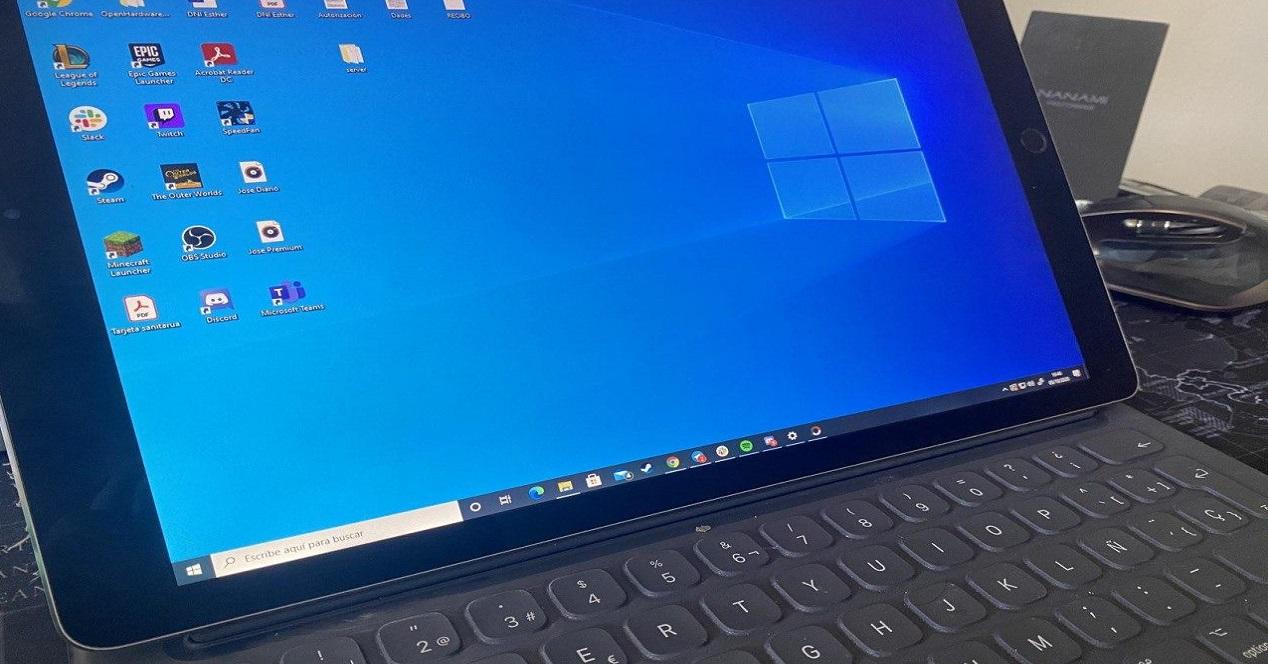
Another way in doing this is from the All Apps screen. To access this section, just open the Start Screen first and once you are on it, simply slide the screen upwards and you should be able to view a list of all the apps and programs that are installed and built-in with your computer. From here, simply go towards the group that is labeled “Productivity” and look for the “Remote Desktop” app shortcut under it as shown below.
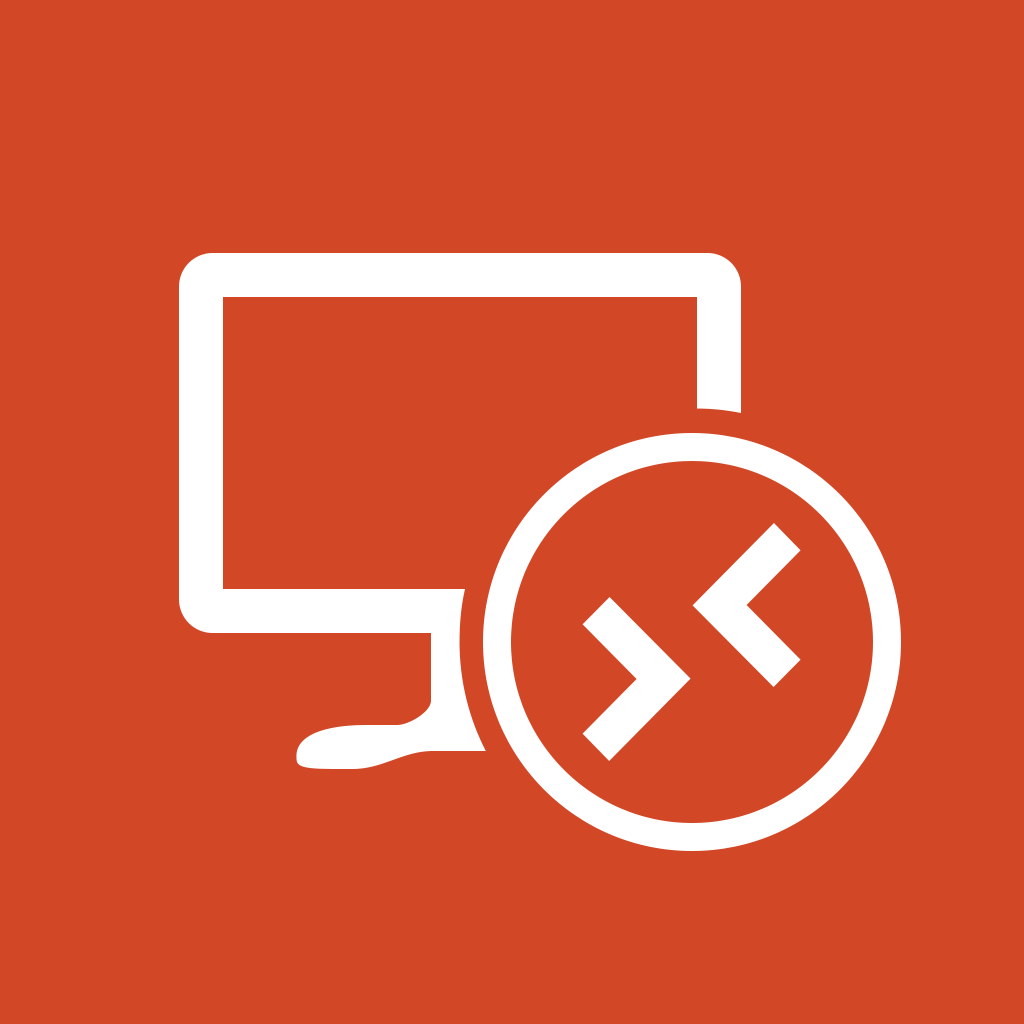
You can choose from these two available methods in launching the Remote Desktop universal app in a Windows 8.1 computer. Now, what if you are using a Windows 10 machine? Do you know how to launch the Remote Desktop universal app in Microsoft’s latest operating system version? If you you don’t know yet then just follow the steps that are going to be shown below.
How to Launch the Remote Desktop Universal App in Windows 10
After the Remote Desktop universal app is installed in a Windows 10computer, the next step that you would need to do is to launch it so you can start using it. Launching this app in Windows 10 is quite different from the methods in how it is launched in Windows 8.1so if you’ve been trying to figure out how to get the app fired up in your Windows 10machine then here are the steps.
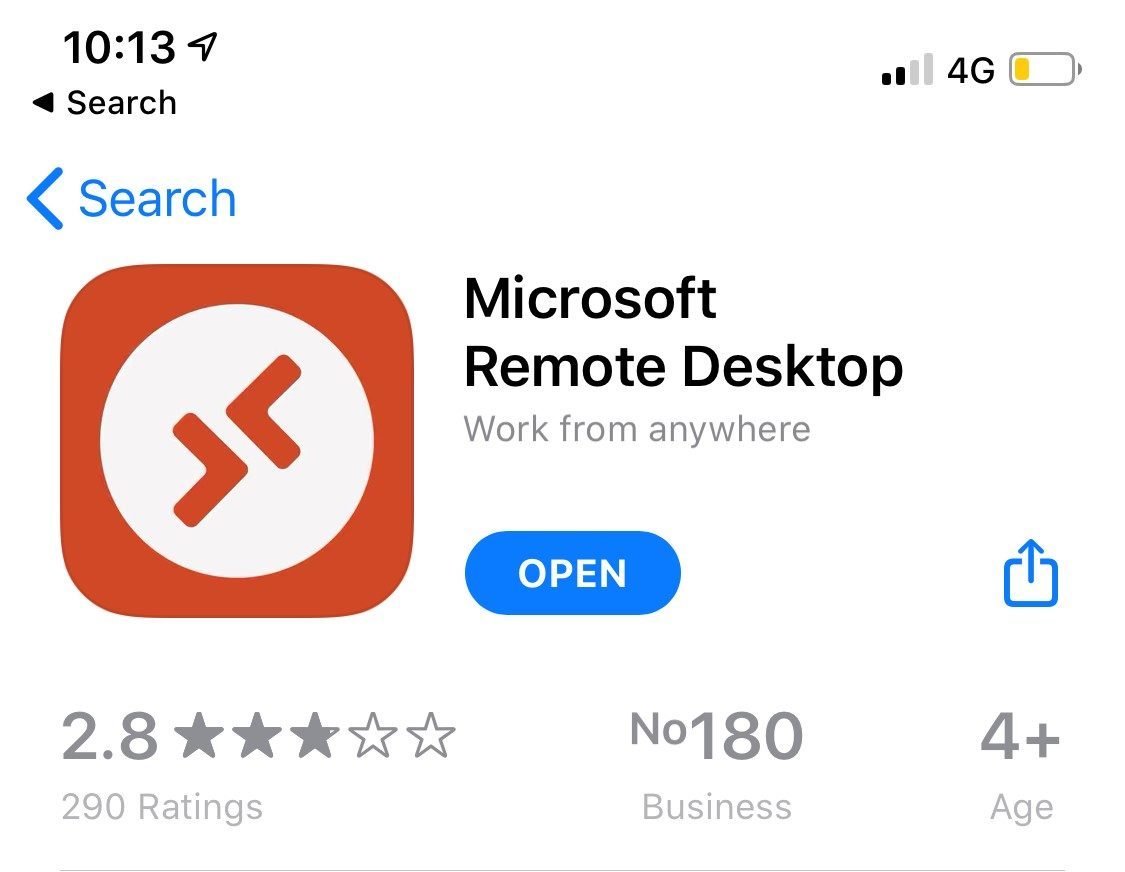
First, you can actually launch it in an quick and easy way simply by pressing the Windows key or clicking on the Start Button in order to launch the Start Menu. Once the Start Menu opens, just put your attention on the list of apps, shortcuts and links on the left portion and from here, look for the “Remote Desktop” app shortcut as you can see being highlighted on the screenshot below.
Since the app has just been installed into your Windows 10 computer, you will see that it is located under the “Recently added” section. Now, in case you don’t find the app shortcut on the Start Menuscreen, you can simply click on the “All apps” link at the bottom-left portion of the Start Menu in order to access the list of all the apps and programs that are installed and built in with Windows 10.
From the list of apps and programs that will appear, just scroll down towards the “R” section (since the apps and programs are arranged alphabetically) and click on the “Remote Desktop” shortcut as shown on the screenshot above. You will also notice that the app shortcut itself is easy to recognize since there is a label on its right portion which says “New”.
If you want a newer method in launching any app, program or setting in Windows 10 then you can choose to use the Search feature. To launch this very useful tool, just press the Windows + S keys and you will see it pop up at the bottom-left portion of the screen. Once it appears, simply input the words “remote desktop” and just click on the Remote Desktop appshortcut that will appear just above the search input box.
Connecting to Another Windows Computer/Device Using the Remote Desktop App
Now that you know how the Remote Desktop app is launched after it gets installed on your Windows 8.1 or Windows 10computer, it is time to learn how you can set it up so you can initiate a Remote Desktopsession. But before we start, you need to remember that you can instantly initiate remote desktop sessions if you are using Windows 8.1 or Windows 10machines however, you can only connect remotely to computers that runs the following Windows OS editions.
- Windows 10 Pro
- Windows 10 Enterprise
- Windows 8.1 Pro
- Windows 8.1 Enterprise
- Windows 8 Pro
- Windows 8 Enterprise
- Windows 7 Ultimate
- Windows 7 Professional
- Windows 7 Enterprise
- Windows Vista Business
- Windows Vista Enterprise
- Windows XP Professional
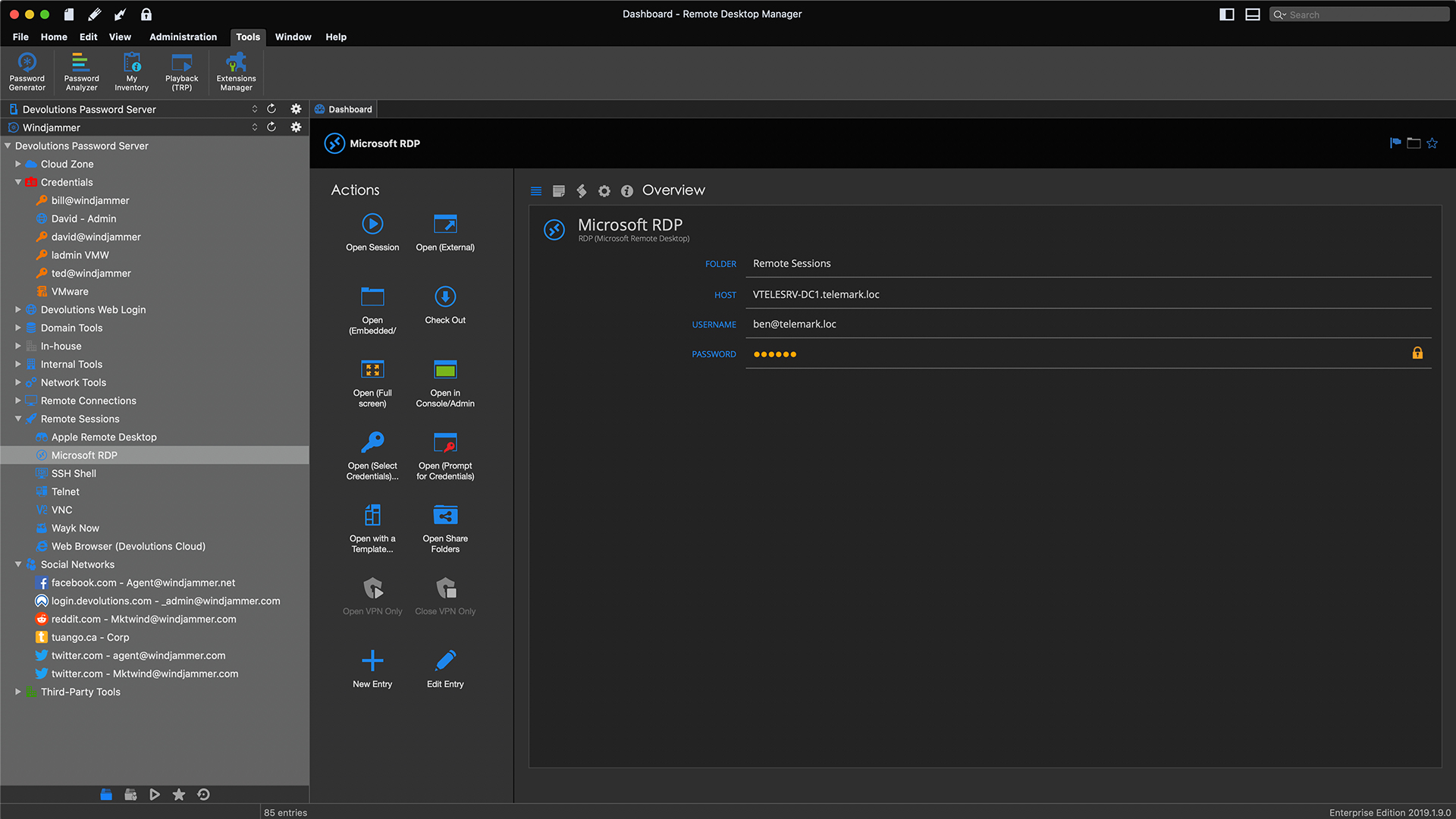
If the computer that you want to connect to runs Ubuntu or Mac OS X, you cannot remotely connect to it using the Microsoft Remote Desktop Universal App so you will need a third party software to do this.
In order to connect to a computer remotely, you will first need to enable Remote Desktop Connections on it and be sure to remember the login credentials of the account to which you have enabled Remote connections for since it will be needed later on. To learn more about enabling Remote Desktop Connectionsin any of the Windows OS versions we’ve given above, you can follow the steps that we have shown in our previous tutorial.
Once you are done setting up the Windows computer which you want to connect to (also known as the host computer), it is time to fire up the Remote Desktop app on your client computer or the computer that you will be using to establish the remote connection from. When the app launches, you will need to put your focus on top-right portion where you will need to click on the “+” icon in order to view the options that are available.
After the “+” icon is clicked, you will be able to see as screen that will pop out of the right portion which says “Choose what to add”. From this screen, all you need to do is click on the first option in it that says “Desktop” as highlighted on the screenshot below.
After hitting on this option, you will be able to access the section where you can enter the computer name of the host computer in case it is connected to the same network that your client computer is connected to or its IP address in case you are connecting to the host computer that is located in a different place via the Internet. This information should be accurate so be sure to enter the right computer name or IP address.
Next, you will now need to remember the account logins on the host computer to which Remote Desktop Connections is enabled. This information is also needed in order to make the session secure. To input these credentials, you will simply need to click on the link that says “Add account”and you will be taken to a screen that looks exactly like the one shown below. Just input the needed information then hit the “Save” button.
On the next screen after hitting “Save”, you will again see other settings and tweaks that you can set for the Remote Desktop session. We recommend that you just leave these settings as they are and just check the option that is found at the bottom which says “Connect to admin session” then hit the “Save” button.
You will then be taken to the home screen of the Remote Desktop universal app and as you can see, there will now be a new item on the screen which is now your added and saved Remote Desktopsession as you can see on the screenshot below.
In order to connect to it, all you need to do is click on the session tile and you will then be asked to enter the password for the user account on the host computer to which Remote Desktop Connection is enabled for. After entering this information, just check the “Remember me” option so you won’t be asked to input the password again the next time you connect then hit “Connect” button.
Now, just wait for a few seconds and voila! You will now be able to view the host computer’s Desktop screen all ready for your tweaking!
Try it and Be Amazed!
As you can see, setting up a Remote Desktop session using the new Remote Desktop universal appfor Windows 8.1 and Windows 10 really works like magic! It will surely be of help to you especially if you need to access your work computer in the office even if you are just at home anytime! Have you tried using this tool in your Windows computer before? We’d like to know how it worked some magic for you. Please feel free to share your Remote Desktop experiences using the comments section below.
-->Applies to: Windows 10, Windows 8.1, Windows Server 2019, Windows Server 2016, Windows Server 2012 R2
You can use the Remote Desktop client for iOS to work with Windows apps, resources, and desktops from your iOS device (iPhones and iPads).
Use the following information to get started. Be sure to check out the FAQ if you have any questions.
Note
- Curious about the new releases for the iOS client? Check out What's new for Remote Desktop on iOS?.
- The iOS client supports devices running iOS 6.x and newer.
Get the Remote Desktop client and start using it
This section will tell you how to download and set up the Remote Desktop client for iOS.
Download the Remote Desktop client from the iOS store
First you'll need to download the client and configure your PC to connect to remote resources.
To download the client:
- Download the Microsoft Remote Desktop client from the iOS App Store or iTunes.
- Set up your PC to accept remote connections.
Add a PC
After you've downloaded the client and configured your PC to accept remote connections, it's time to actually add a PC.
To add a PC:
- In the Connection Center, tap +, then tap Add PC.
- Enter the following information:
- PC name – the name of the computer. The PC name can be a Windows computer name, an Internet domain name, or an IP address. You can also append port information to the PC name (for example, MyDesktop:3389 or 10.0.0.1:3389).
- User name – The user name you'll use to access the remote PC. You can use the following formats: user_name, domainuser_name, or
user_name@domain.com. You can also select Ask when required to be prompted for a user name and password when necessary.
- You can also set the following additional options:
- Friendly name (optional) – An easy-to-remember name for the PC you're connecting to. You can use any string, but if you don't specify a friendly name, the PC name is displayed instead.
- Gateway (optional) – The Remote Desktop gateway that you want to use to connect to virtual desktops, RemoteApp programs, and session-based desktops on an internal corporate network. Get the information about the gateway from your system administrator.
- Sound – Select the device to use for audio during your remote session. You can choose to play sound on the local devices, the remote device, or not at all.
- Swap mouse buttons – Whenever a mouse gesture would send a command with the left mouse button, it sends the same command with the right mouse button instead. Swapping mouse buttons is necessary if the remote PC is configured for left-handed mouse mode.
- Admin Mode - Connect to an administration session on a server running Windows Server 2003 or later.
- Clipboard - Choose whether to redirect text and images in your clipboard to your PC.
- Storage - Choose whether to redirect storage to your PC.
- Tap Save.
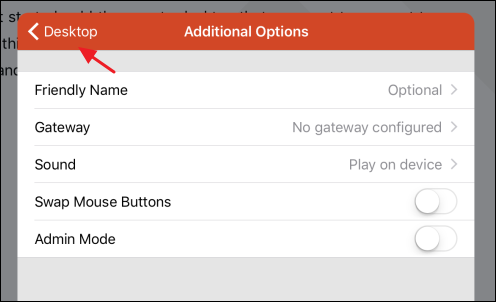
Need to edit these settings? Press and hold the desktop you want to edit, then tap the settings icon.
Add a workspace
To get a list of managed resources you can access on your iOS, add a workspace by subscribing to the feed provided by your admin.
To add a workspace:
- On the Connection Center screen, tap +, and then tap Add workspace.
- In the Feed URL field, enter the URL for the feed you want to add. This URL can be either a URL or an email address.
- If you use a URL, use the one your admin gave you.
- This URL is usually a Windows Virtual Desktop URL. Which one you use depends on which version of Windows Virtual Desktop you're using.
- For Windows Virtual Desktop (classic), use
https://rdweb.wvd.microsoft.com/api/feeddiscovery/webfeeddiscovery.aspx. - For Windows Virtual Desktop, use
https://rdweb.wvd.microsoft.com/api/arm/feeddiscovery.
- For Windows Virtual Desktop (classic), use
- This URL is usually a Windows Virtual Desktop URL. Which one you use depends on which version of Windows Virtual Desktop you're using.
- If you use an email address, enter your email address. Entering your email address tells the client ot search for a URL associated with your email address if your admin configured the server that way.
- If you use a URL, use the one your admin gave you.
- Tap Next.
- Provide your credentials when prompted.
- For User name, give the user name of an account with permission to access resources.
- For Password, give the password for the account.
- You may also be prompted to give additional information depending on the settings your admin configured authentication with.
- Tap Save.
After you've finished, the Connection Center should display the remote resources.
Once subscribed to a feed, the feed content will update automatically on a regular basis. Resources may be added, changed, or removed based on changes made by your administrator.
Manage your user accounts
When you connect to a PC or workspace, you can save the user accounts to select from again.
To create a new user account:
- In the Connection Center, tap Settings, and then tap User Accounts.
- Tap Add User Account.
- Enter the following information:
- User Name - The name of the user to save for use with a remote connection. You can enter the user name in any of the following formats:
user_name,domainuser_name, oruser_name@domain.com. - Password - The password for the user you specified.
- User Name - The name of the user to save for use with a remote connection. You can enter the user name in any of the following formats:
- Tap Save.
To delete a user account:
- In the Connection Center, tap Settings, and then tap User Accounts.
- Select the account you would like to delete.
- Tap Delete.
Connect to an RD Gateway to access internal assets
A Remote Desktop Gateway (RD Gateway) lets you connect to a remote computer on a corporate network from anywhere on the Internet. You can create and manage your gateways using the Remote Desktop client.
To set up a new gateway:
- In the Connection Center, tap Settings > Gateways.
- Tap Add gateway.
- Enter the following information:
- Gateway name – The name of the computer you want to use as a gateway. The gateway name can be a Windows computer name, an Internet domain name, or an IP address. You can also add port information to the server name (for example, RDGateway:443 or 10.0.0.1:443).
- User name - The user name and password to be used for the Remote Desktop gateway you're connecting to. You can also select Use connection credentials to use the same user name and password that you used for the remote desktop connection.
Navigate the Remote Desktop session
This section describes tools you can use to help navigate your Remote Desktop session.
Rdp On Windows 10 Home
Start a Remote Desktop connection
- Tap the remote desktop connection to start the remote desktop session.
- If you're asked to verify the certificate for the remote desktop, tap Accept. To accept by default, set Don't ask me again for connections to this computer to On.
Connection bar
The connection bar gives you access to additional navigation controls.
- Pan Control: The pan control enables the screen to be enlarged and moved around. Pan control is only available using direct touch.
- To enable or disable the pan control, tap the pan icon in the connection bar to display the pan control. The screen will zoom in while the pan control is active. the pan icon in the connection bar again to hide the control and return the screen to its original resolution.
- To use the pan control, tap and hold the pan control. While holding, drag your fingers in the direction you want to move the screen.
- To move the pan control, double-tap and hold the pan control to move the control on the screen.
- Connection name: The current connection name is displayed. Tap the connection name to display the session selection bar.
- Keyboard: Tap the keyboard icon to display or hide the keyboard. The pan control is displayed automatically when the keyboard is displayed.
- Move the connection bar: Tap and hold the connection bar. While holding the bar, drag it over to its new location. Let go of the bar to place it at the new location.
Session selection
You can have multiple connections open to different PCs at the same time. Tap the connection bar to display the session selection bar on the left-hand side of the screen. The session selection bar enables you to view your open connections and switch between them.
Here's what you can do with the session selection bar:
- To switch between apps in an open remote resource session, tap the expander menu and choose an app from the list.
- Tap Start New to start a new session, then choose a session from the list of available sessions.
- Tap the X icon on the left side of the session tile to disconnect from your session.
Command bar
The command bar replaced the Utility bar starting in version 8.0.1. You can use the command bar to switch between mouse modes and return to the connection center.
Use touch gestures and mouse modes in a remote session
The client uses standard touch gestures. You can also use touch gestures to replicate mouse actions on the remote desktop. The mouse modes available are defined in the table below.
Note
In Windows 8 or later, the native touch gestures are supported in Direct Touch mode. For more information on Windows 8 gestures, see Touch: Swipe, tap, and beyond.
| Mouse mode | Mouse operation | Gesture |
|---|---|---|
| Direct touch | Left-click | Tap with one finger |
| Direct touch | Right-click | Tap and hold with one finger |
| Mouse pointer | Left-click | Tap with one finger |
| Mouse pointer | Left-click and drag | Tap and hold with one finger, then drag |
| Mouse pointer | Right-click | Tap with two fingers |
| Mouse pointer | Right-click and drag | Double-tap and hold with two fingers, then drag |
| Mouse pointer | Mouse wheel | Double-tap and hold with two fingers, then drag up or down |
| Mouse pointer | Zoom | With two fingers, pinch to zoom out and spread fingers apart to zoom in |
Supported input devices
The client has Bluetooth mouse support for iOS 13 and iPadOS as an accessibility feature. You can use Swiftpoint GT or ProPoint mice for deeper mouse integration. The client also supports external keyboards that are compatible with iOS and iPadOS.
For more information about device support, see What's new in the iOS client and the iOS App Store.
Tip
Swiftpoint is offering an exclusive discount on the ProPoint mouse for iOS client users.
Use a keyboard in a remote session
You can use either an on-screen keyboard or physical keyboard in your remote session.
For on-screen keyboards, use the button on the right edge of the bar above the keyboard to switch between the standard and additional keyboard.
Ipad Rdp Windows 10 To Windows 7
If Bluetooth is enabled on your iOS device, the client automatically detects the Bluetooth keyboard.
While certain key combinations might not work as expected in a remote session, many of the common Windows key combinations, such as CTRL+C, CTRL+V, and ALT+TAB will work.
How To Remote Desktop From Ipad To Windows 10
Tip
Ipad Remote Desktop Windows 10 Home
Questions and comments are always welcome. However, if you post support requests or product feedback in this article's comments section, we won't be able to respond to your feedback. If you need help or want to troubleshoot your client, we highly recommend you go to the Remote Desktop client forum and start a new thread. If you have a feature suggestion, you can tell us using the Client UserVoice forum.
